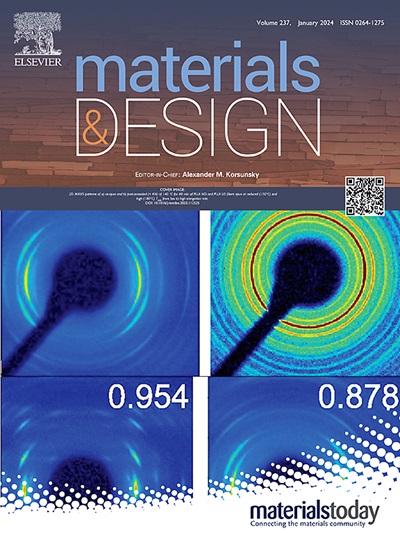Energy-efficient microwave heating for rapid fabrication of porous carbon nanofibers
IF 7.6
2区 材料科学
Q1 MATERIALS SCIENCE, MULTIDISCIPLINARY
引用次数: 0
Abstract
High-temperature heat treatment is a crucial thermochemical process for pyrolysis/carbonization of carbon nanofibers (CNFs). However, the inefficient heat transfer process of traditional heating methods often results in inhomogeneous heating, low porosity, long preparation times, and high energy consumption. Here, we first use electrospinning and microwave heating techniques to rapidly fabricate porous CNFs with the help of microwave absorbers. To deeply understand the microwave heating mechanism and differences with traditional heating, we systematically investigate and analyze the effects of the type and concentration of the microwave absorbers, microwave heating parameters, and two heating mechanisms (microwave and traditional heating) on the fabrication of CNFs by experimental investigation and COMSOL simulations. Such microwave heating technique can enable an ultrafast heating rate (up to 250 °C min−1 on average). Due to the rapid internal and volumetric heating, CNFs prepared using microwave heating exhibit a larger carbon content (92.86 %) and a larger BET specific surface area (687 m2/g) than their counterparts prepared using traditional heating methods (88.49 % and 460.7 m2/g). Moreover, the possible mechanisms of microwave heating have been explained. This work paves the way for the fabrication of porous CNFs and other advanced carbon nanomaterials using microwave heating techniques.

求助全文
约1分钟内获得全文
求助全文
来源期刊

Materials & Design
Engineering-Mechanical Engineering
CiteScore
14.30
自引率
7.10%
发文量
1028
审稿时长
85 days
期刊介绍:
Materials and Design is a multi-disciplinary journal that publishes original research reports, review articles, and express communications. The journal focuses on studying the structure and properties of inorganic and organic materials, advancements in synthesis, processing, characterization, and testing, the design of materials and engineering systems, and their applications in technology. It aims to bring together various aspects of materials science, engineering, physics, and chemistry.
The journal explores themes ranging from materials to design and aims to reveal the connections between natural and artificial materials, as well as experiment and modeling. Manuscripts submitted to Materials and Design should contain elements of discovery and surprise, as they often contribute new insights into the architecture and function of matter.
 求助内容:
求助内容: 应助结果提醒方式:
应助结果提醒方式:


